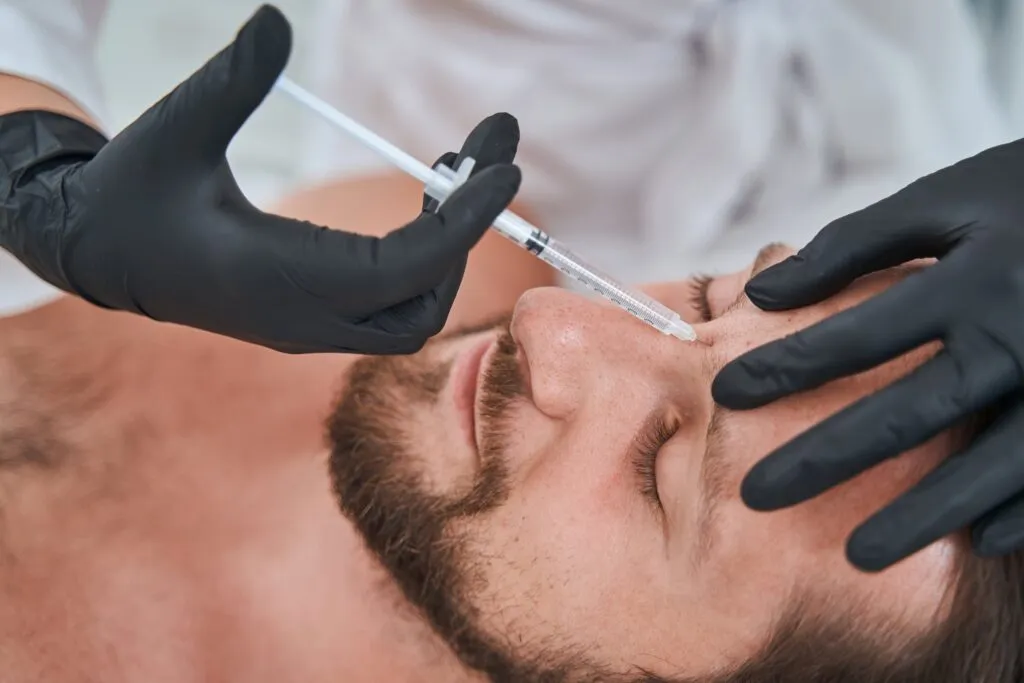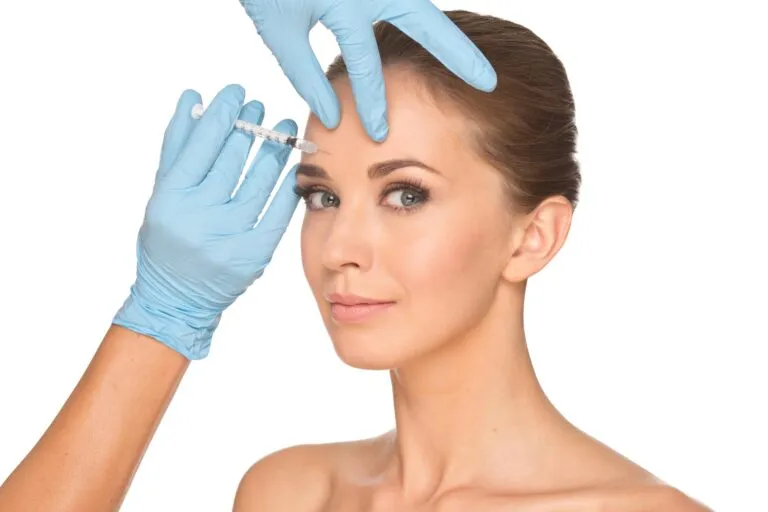Migraines are debilitating headaches that can significantly impact a person’s quality of life. They are often accompanied by severe pain, nausea, sensitivity to light and sound, and can last for hours or even days. While there are various treatment options available, one unconventional yet effective method gaining popularity is the use of Botox injections. Typically known for its cosmetic applications, Botox has proven to be a game-changer for migraine sufferers. In this article, we will explore the surprising benefits of using Botox for migraine treatment.
What is Botox?

Botox, short for botulinum toxin, is a neurotoxic protein produced by the bacterium Clostridium botulinum. It is a purified form of this toxin that is used for various medical and cosmetic purposes. Botox works by temporarily paralyzing or weakening muscles, blocking nerve signals that cause muscle contractions.
Originally, Botox was used primarily for its therapeutic applications in treating medical conditions such as muscle spasms, excessive sweating (hyperhidrosis), and certain movement disorders. However, it gained widespread recognition for its cosmetic benefits in reducing the appearance of wrinkles and fine lines on the face.
When used for cosmetic purposes, Botox is injected into specific facial muscles to temporarily relax them. This smooths out wrinkles and lines, giving the face a more youthful and refreshed appearance. In addition to its cosmetic applications, Botox has been FDA-approved for the prevention of chronic migraines since 2010.
How Botox Can Help with Migraines:
Botox is believed to help with migraines by blocking the release of certain chemicals involved in pain transmission and reducing muscle tension. The exact mechanism of how Botox works in migraine treatment is not fully understood, but there are several theories:
Inhibition of Neurotransmitter Release:
Botox injections may prevent the release of neurotransmitters, such as substance P and glutamate, which play a role in pain transmission. By blocking the release of these neurotransmitters, Botox may reduce the sensitivity of pain receptors and decrease the frequency and intensity of migraine attacks.
Muscle Relaxation:
Botox has muscle-relaxing properties. In some cases, muscle tension and spasms in the head, neck, and face can trigger migraines. By injecting Botox into specific muscle areas, it can relax the muscles and reduce their ability to contract excessively. This relaxation can alleviate muscle-related migraine triggers and potentially decrease the frequency of migraines.
Modulation of Sensory Nerves:
Botox injections may affect sensory nerves in the areas where it is administered. Migraine attacks involve the activation of sensory nerves, which can lead to the perception of pain. By modulating these sensory nerves, Botox may interrupt the pain signaling and provide relief from migraines.
It’s important to note that Botox is typically used for the prevention of chronic migraines rather than for immediate relief during an acute migraine attack. The treatment involves a series of injections in specific muscle areas, such as the forehead, temples, back of the head, and neck. The injections are usually administered once every twelve weeks, and it may take a few treatment sessions before the full effects are realized.
Benefits of Using Botox for Migraine Treatment:
Using Botox as a migraine treatment offers several benefits for individuals suffering from chronic migraines. Here are some of the key advantages:
- Reduction in Migraine Frequency: Botox injections have been shown to significantly reduce the frequency of migraine attacks. Clinical studies have demonstrated that patients who received Botox treatment experienced, on average, a decrease in the number of headache days per month. This reduction in migraine frequency can have a profound impact on a person’s quality of life, allowing them to enjoy more pain-free days.
- Decreased Migraine Severity: Botox treatment has also been found to decrease the severity of migraines. The intensity of pain experienced during migraine attacks is often debilitating, affecting daily activities and overall well-being. By receiving Botox injections, individuals may experience milder migraines, making them more manageable and reducing the need for strong pain medications.
- Long-Lasting Relief: One of the notable benefits of Botox for migraine treatment is the long-lasting relief it provides. While individual results may vary, the effects of Botox injections can typically last for up to three months. This means that individuals can enjoy an extended period without migraines or with reduced migraine symptoms between treatment sessions.
- Improved Response to Other Treatments: Botox treatment can potentially enhance the effectiveness of other migraine medications. Some individuals who have not found adequate relief with other treatments may experience better results when Botox is added to their migraine management plan. It can complement existing therapies, allowing for a more comprehensive approach to migraine treatment.
- Reduced Medication Dependency: Chronic migraine sufferers often rely on a variety of medications to manage their symptoms. Over time, excessive use of pain medications can lead to medication overuse headaches and potential side effects. Botox offers an alternative treatment option that may reduce the need for daily medication intake, potentially minimizing the risks associated with long-term medication use.
- Non-Invasive Procedure: Botox injections for migraines are a non-invasive treatment option. The procedure involves a series of small injections administered in specific muscle areas, usually in a doctor’s office. Compared to invasive surgical procedures, Botox offers a relatively simple and straightforward approach to migraine treatment. It requires no downtime, and individuals can typically resume their normal activities immediately after the procedure.
- Improved Quality of Life: Perhaps the most significant benefit of using Botox as a migraine treatment is the improvement in overall quality of life. Chronic migraines can have a profound impact on a person’s daily functioning, emotional well-being, and relationships. By reducing the frequency and severity of migraines, Botox treatment can help individuals regain control over their lives, engage in activities they enjoy, and improve their overall sense of well-being.
Is Botox Right for You?

Determining whether Botox is the right treatment for your migraines requires a comprehensive evaluation by a neurologist or headache specialist experienced in administering Botox for migraine treatment. They will consider various factors, such as your medical history, previous treatment outcomes, and the frequency and severity of your migraines. The diagnosis of chronic migraines and the failure of other treatment options will also be assessed. Through discussions with your healthcare provider, you will explore the potential benefits and risks of Botox treatment, including the expected reduction in migraine frequency and the possibility of side effects.
A physical examination will be conducted to determine the appropriate injection sites and assess muscle tension related to migraines. Based on these assessments, a personalized treatment plan will be developed, and you will be closely monitored to evaluate the effectiveness of Botox treatment. Open and transparent communication with your healthcare provider is essential throughout the process to ensure that Botox is the right fit for your specific migraine condition.
In Conclusion
In conclusion, using Botox for migraine treatment offers several significant benefits for individuals suffering from chronic migraines. By reducing the frequency and severity of migraines, Botox can provide much-needed relief and improve the overall quality of life for migraine sufferers. However, it is crucial to consult with a healthcare professional experienced in Botox treatment to determine if it is suitable for your specific condition and medical history. With proper evaluation and guidance, Botox can be a game-changer in managing chronic migraines and offering individuals a renewed sense of hope and relief.

Dr. Kashouty, a diplomate of the American Board of Psychiatry and Neurology (ABPN), practices general neurology with fellowship trained specialization in clinical neurophysiology. Dr. Kashouty finds the form and function of the nerves and muscles the most interesting part of neurology, which is what led him to specialize in neurophysiology with more emphasis on neuromuscular conditions. He treats all neurological diseases, but his main focus is to treat and manage headaches, movement disorders and neuromuscular diseases.





